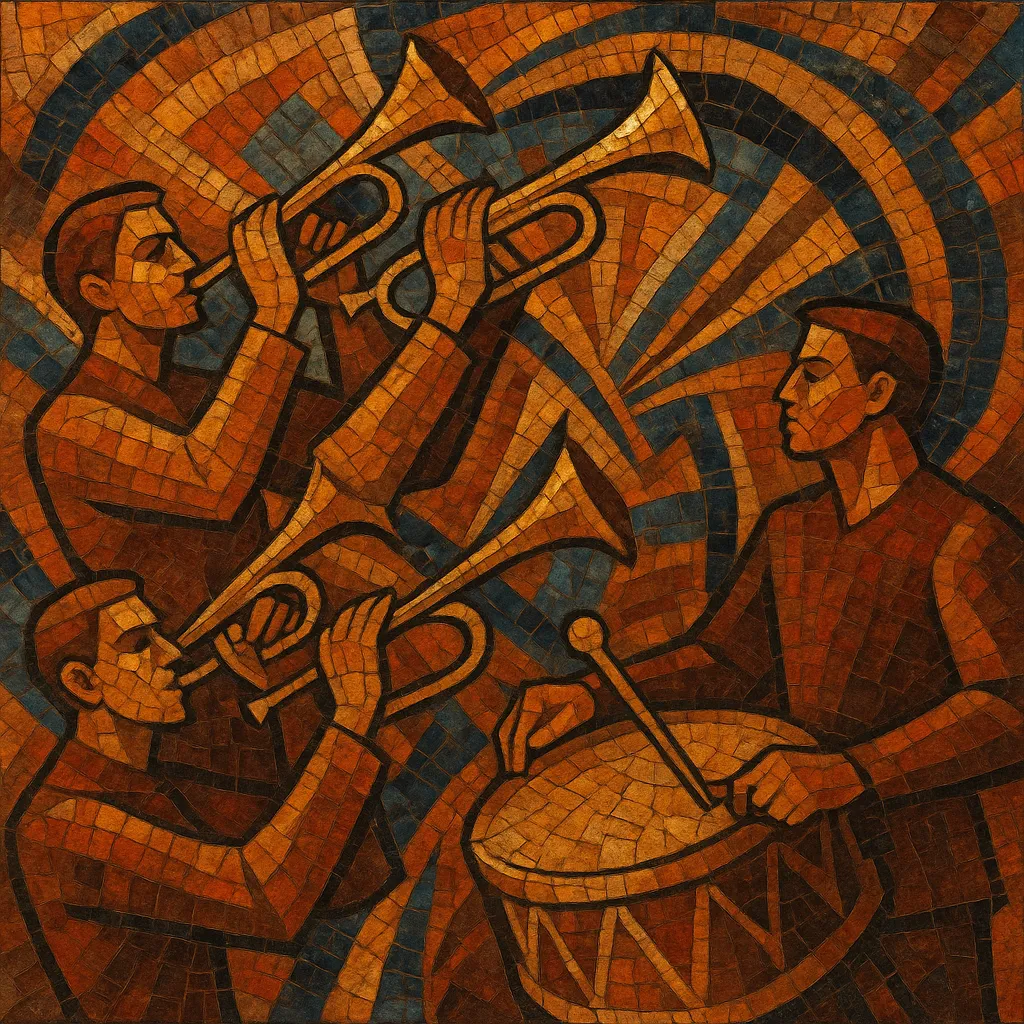Fanfare is a short, brilliantly scored piece—most often for brass and percussion—used to announce entrances, open ceremonies, or signal important moments. Its musical language emphasizes open intervals (fourths and fifths), triadic outlines, pedal points, and bold, dotted rhythms that project across large spaces.
While trumpet flourishes existed earlier, the modern concept and the term itself emerged from French court and hunting traditions, where clarions and timpani underpinned regal spectacle. In the concert hall and on screen, fanfares evolved into standalone works that frame events with a sense of pageantry, urgency, and grandeur.
Today, the style remains ubiquitous: from state ceremonies and military honors to sports events, film logos, and orchestral programs, fanfare is the musical shorthand for the ceremonial and the epic.
Trumpet signals and hunting calls predate the term “fanfare,” appearing across European courts and battlefields during the late Middle Ages and Renaissance. Natural trumpets, limited to the harmonic series, encouraged the open, triadic sonorities and martial rhythms that would become hallmarks of the style.
The word “fanfare” (French) gained currency in the 18th century, aligning with courtly and hunting traditions in France. Baroque practice—trumpets with timpani, dotted rhythms, and antiphonal calls—solidified the ceremonial function. This courtly idiom spread across Europe in royal and ecclesiastical contexts.
In the 19th century, fanfare writing broadened beyond courts to civic and military life, intersecting with the rise of brass bands and public ceremonies. As orchestras expanded, composers embedded fanfare-like openings and interludes to mark grandeur and transition.
The 20th century produced iconic standalone fanfares: Paul Dukas’s Fanfare to precede La Péri, Richard Strauss’s Vienna Philharmonic Fanfare, Benjamin Britten’s Fanfare for St Edmundsbury, and Aaron Copland’s Fanfare for the Common Man. With radio, cinema, and television, fanfares became sonic logos for institutions and events—Leo Arnaud’s Bugler’s Dream and John Williams’s Olympic fanfares cemented the sound as a universal cue for ceremony.
Modern fanfares appear in state functions, sports anthems, festival openings, and film/game scores. In the Low Countries, the fanfare orchestra tradition (brass, saxophones, and percussion) sustains a community-based performance culture, while concert halls and media continue to rely on fanfare’s unmistakable language of heraldry and spectacle.


